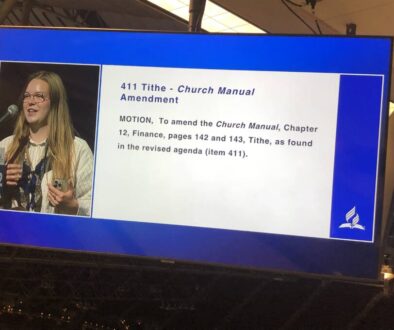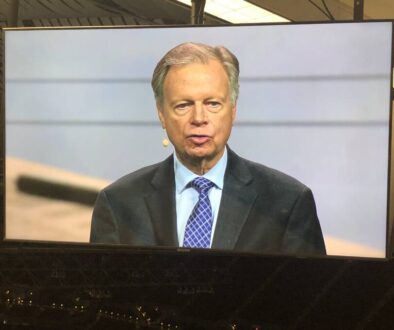Census of Religion Shows Growing Nondenominational, Non-Christian Segments in the U.S.
by AT News Team
Updated May 5.
Every ten years the major religious bodies in the United States collaborate to conduct a census of congregations and adherents. The 2010 Census of Religion was released this week by the Association of Statisticians of American Religious Bodies (ASARB). The data show that nondenominational, independent congregations and the Mormon and Muslim religions have been the fastest-growing segments over the past decade. A little less than half of Americans are claimed by a local congregation of any religion.
The Catholic Church remains the largest faith community with 59 million adherents though it is in decline. It has lost about five percent from 2000 to 2010 or a total of three million people.
The largest Protestant denomination is the Southern Baptist Convention with 50,000 congregations and 20 million adherents. It too has lost ground in the last decade despite its long-standing emphasis on evangelism and church growth.
About four percent of Americans now belong to nondenominational congregations. This segment is among the top five religious groups in every state but two and in 88 percent of U.S. counties. This development shocked researchers with its rapid rise, although there have been hints in this direction in several recent surveys. “I simply had not seen before how large the nondenominational movement is in this country,” said Dale Jones, one of the coordinators of the project and a research executive for the Church of the Nazarene.
“These congregations should be seen as a separate and distinctive religious reality,” says Scott Thumma, a sociologist at Hartford Seminary. “If we begin to think of them as not just individual, isolated congregations, but rather as a unique religious phenomenon, we can begin to address the question of why they have become so popular in the past few decades.”
The Church of Jesus Christ of Latter-day Saints, often called Mormons, has grown to more than six million adherents and has established congregations throughout the traditionally Evangelical “Bible Belt” of the South and Midwest, and as far away from Utah as Maine. It has grown by 50 percent in the ten years from 2000 to 2010 and is the fastest-growing group in 26 states
Growth in the number of Seventh-day Adventist adherents over the decade was about 30 percent, the highest growth rate among Christian denominations with more than a half million members. Last year USA Today published a report listing the Adventist Church as the fastest growing Christian denomination in America and these data sustain that description. The Adventist growth rate is less than that of the Mormons, but most researchers do not list the LDS Church as a Christian body. A comparision of the data from the U.S. Council of Churches in the USA Today story and the U.S. Religious Census data also reveals that the two studies count different things. It is the standard “apples and oranges” issue in statistics. The USA Today story was about membership and this report is about adherents. What’s the difference? A count of “adherents” includes the children of members and the Mormons have a much higher birth rate than do Adventists in America. Both reports are entirely accurate.
The 2010 Census of Religion found about 1.2 million adherents to the Adventist Church in the United States. There were Adventist congregations in 1,827 of the 3,033 counties in the nation or about 60 percent of these local government units. Los Angeles County in California had the largest number of Adventist congregations (140) and adherents (44,377). Walla Walla County in Washington state had the biggest percentage of Adventist adherents in the local population, a total of 11.4 percent compared to less than a half percent across the country.
One of the most unexpected things to emerge from the Adventist data is the way the Adventist membership has shifted from a largely rural and small-town base to a largely urban base. A total of 73 percent of Adventist adherents in 2010 were connected with congregations in metropolitan areas, nearly 60 percent in metropolitan areas with populations over one million. Only 12 percent of the Adventist adherents are connected with congregations in rural areas and another 15 percent in what the U.S. Census calls “micropolitan areas” or small towns.
The Census of Religion has published a series of maps showing the location of Adventist adherents and congregations by county and city. The vast majority of Adventist congregations are clustered along the coast of California, Oregon and Washington and in the Washington DC to Boston corridor on the east coast. Eight other metropolitan areas have large concentrations of Adventists; Atlanta, Chicago, Dallas, Dayton, Miami, Minneapolis, and Orlando.
The Mormon growth comes at a time when it appears that an LDS member, former Massachusetts governor Mitt Romney, will be the nominee for president of one of the two major political parties. And a major Broadway play about Mormon culture has had a successful run for much of the last year. Many writers have remarked that “the Mormon hour” has come while most Protestant theologians still consider it less than a fully Christian faith.
Non-Christian religions have had even more rapid growth in the last decade. The Muslim population, for example, is growing at a faster rate than the general population in America. This study found 2,100 Muslim centers with more than 2.6 million adherents. This represents an increase of 67 percent since 2000.
A total of 236 religious bodies submitted data about the location and number of adherents in each of their congregations for this study. They represent more than 90 percent of all the individuals who participate in religious groups in the country. The Seventh-day Adventist Church in North America is one of the participating bodies.
This research program has been known as the Religious Congregations and Membership Study (RCMS) until the most recent round when it became the U.S. Religious Census. It originated in 1952 after the official government census bureau decided that it would no longer collect information about religion because of concerns about violations of the First Amendment. It was replicated in 1971, 1980, 1990 and 2000.
A summary report and a number of maps for each of the 236 participating religions can be downloaded at www.rcms2010.org and detailed individual reports for each county, metropolitan area and state will be published by the Association of Religion Data Archives at www.thearda.com.



